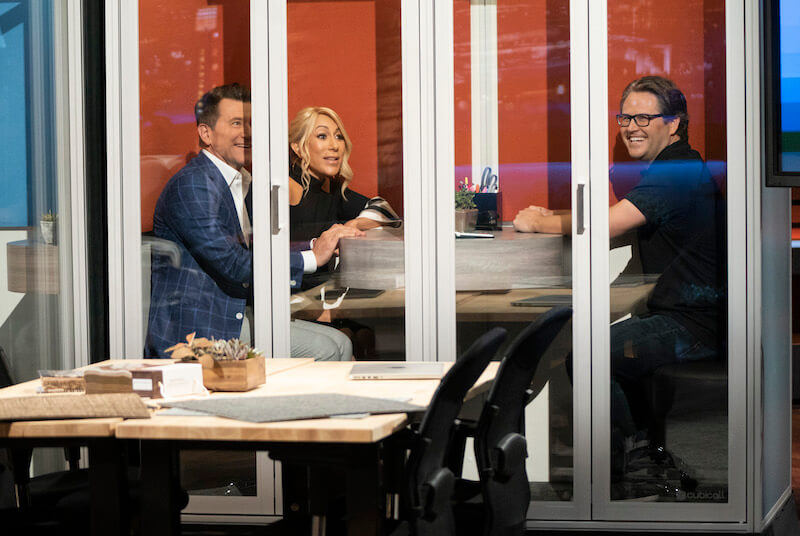Open-plan office design was created in Germany in the 1950s and became popular in the United States during the 1960s. According to an article in Fortune Magazine on May 12, 2016, barrier-free workplaces were first popular in tech startups, but spread to advertising, media and architecture, as well as other more traditional established industries. The design was meant to provide opportunities for spontaneous collaboration and contribute to increased creativity and productivity in the workplace. Open floor plans also reflect the more lax hierarchy and environment of today’s entrepreneurial start-ups.

In 2016, brothers Anthony & Nick Pucci worked in a marketing office with an open-floor plan. The phones were always ringing and the conversations of their co-workers were distracting and disruptive. They started looking into buying a module phone booth so they could make calls in private. There was one on the market, but its price was prohibitive. It was possible to purchase old phone booths but they were heavy and did not fit easily through interior office doors. Being DIY types, they were determined to build their own private phone booth that would be easy to move and they could take it with them if they changed jobs or office locations.
According to the Fortune Magazine article, at this very time, a backlash against open floor plans had begun. A 2015 Washington Post headline labeled the design “oppressive” and a Google search revealed numerous articles and testimonials detailing the difficulties experienced in the open-plan atmosphere.
A Gallup Survey referenced by Jeff Rohde of CommercialCafe in November, 2018, found that approximately 70% of US offices utilize an open-floor plan. However, in a survey of over 2,000 U.S. office workers done by CommercialCafe, nearly 66% considered private offices as the ideal. Co-working and open plan offices were ranked among the least favorite. Why is a design that started with the lofty goal of promoting collaboration and increasing productivity now ranked so low that it has been referred to as “oppressive?”
It turns out that lack of privacy and constant exposure to the conversations of co-workers creates a more chaotic atmosphere with more interruption, and actually leads to lower productivity and lower quality of work. Working in a state of almost constant collaboration leaves little time for individual work.

After Anthony and Nick installed their prototype phone booth at their workplace, they began to get compliments from clients and inquiries about the possibility of getting a booth for themselves. In August 2017 they started Cubicall and sold two booths the first weekend they were on-line. Interest grew rapidly and soon they had installed booths in several Fortune 100 and Fortune 500 companies in California, New York and Boston.
The Cubicall phone booth is manufactured in in Los Angeles and is made from ultra-lightweight honeycomb infill wood covered with laminate. While not technically soundproof, Cubicall absorbs sound and provides privacy for the occupant. The walls are built with acoustic fill that absorbs a wide range of sound frequencies. A powerful but quiet fan built into the ceiling moves 110 cubic feet of air per minute, providing air circulation for a pleasant experience. Two USB outlets, one 120-volt outlet, and Ethernet cables are built directly into the desk. The doors are bi-fold, which maximizes space in confined offices and helps businesses comply with International Building Codes. A larger model is available for two or three persons to conduct a private conference.

The most effective way to gain the benefits and reduce the negatives of both open-floor and private area designs seems to be establishing a workplace with a mix of individual, private workspaces and open space, collaborative areas. An article by Jena McGregor of The Washington Post on January 1, 2019, reports that interest in privacy booths has increased dramatically over the past several years. The Wall Street Journal reported that in 2015 one booth-maker attended the design industry trade show in Chicago. In 2018 there were more than a dozen and predictions are that privacy booths will become more and more commonplace during 2019.

